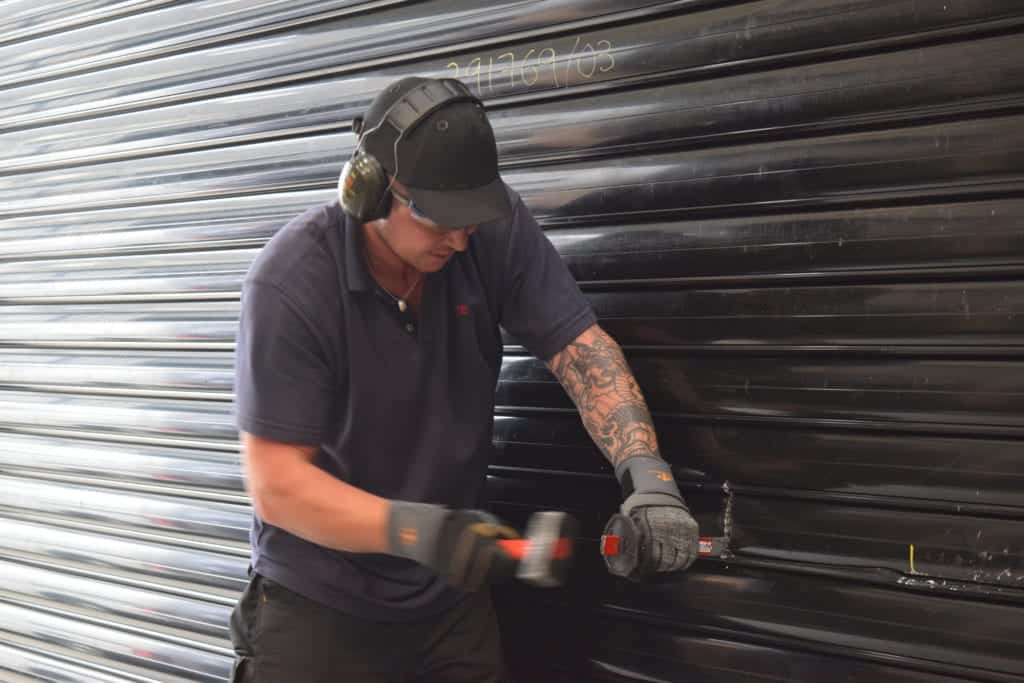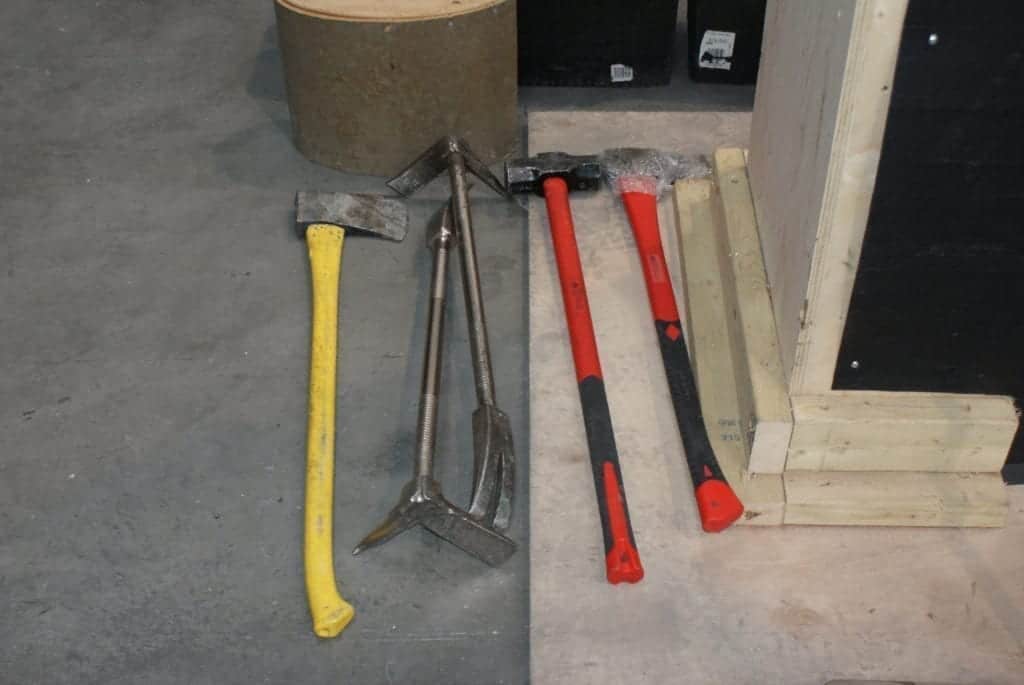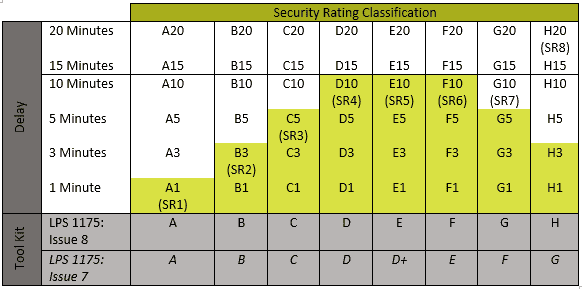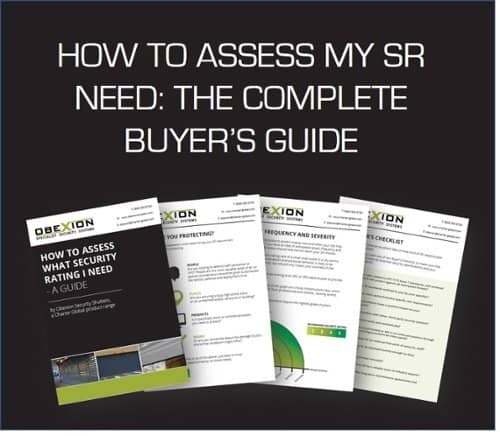As of the 2nd January 2019, Issue 8 of security certification standard LPS 1175 has come into effect.
One of the more substantial revisions to the standard to date, LPS 1175: Issue 8 has been devised to improve the testing guidelines for security products, enabling a far more realistic scope for security ratings.
This is an essential tool for specifying security products. Equipment certified to LPS 1175 is proven successful in defending the exploitable gaps in security, ensuring that occupants and valuables remain safe and protected.
LPS 1175 Issue 8 seeks to provide inclusive protection of a wider range of threat scenarios.
If you’re looking for details on Issue 7 of the standard, click here.
Through a wider definition of tool categories, attack times and ratings, specifiers can therefore select products that provide mitigation of specific risks.
This post has been created to provide a basic overview of a complicated revision. Here is what we will cover:
- What is the LPS 1175 Standard?
- What changes to the standard are there in LPS 1175 Issue 8?
- Which tools are in the different categories?
- What does this mean for LPS 1175 Issue 7 products?
Let’s start from the beginning.

What is the LPS 1175 Standard?
Loss Prevention Standards (LPSs) are governed by the Loss Prevention Certification Board (LPCB).
The leading centre for product testing for both security and fire products, the LPCB is delivered by Building Research Establishment (BRE) here in the UK.
With over 70 LPSs published, an enormous range of products are tested for compliance and resistance including alarm transmission, access control and physical security.
The LPS 1175 is concerned with physical security, including products manufactured for perimeter, façade, internal spaces and entrapment protection.
The higher the security rating, the more formidable the security product. You can find further information on the LPS 1175 standard here.

What changes to the standard are there in LPS 1175 Issue 8?
There are a number of key changes to LPS 1175 to be aware of:
Firstly, changes include reevaluating portable powered and petrol driven tools, followed by masonry type carbide tipped drill bits, and reestablishing them in higher tools categories.
Led by risk assessment, standards such as LPS 1175: Issue 8 are used to determine a product’s ability to mitigate threat.
Therefore the second amendment to note is tool categories. As vital part of the testing procedure, restrictions have also been established to account for the number of tools used and their combined weight.

The next amendment comes in the form of an additional attacker. Tool Category F (as seen below in the table) and above now reflect the threat of a more terrifying attack: mobs.
The use of multiple attackers in testing conditions is not LPS 1175: Issue 7 permitted; this change is better reflection of incidents such as ORT (Organised Retail Theft) and gang attacks, such as in a riot situation.
Lastly, and by far the most important update, is the classification. BRE describes it best here:
“Developed following extensive consultation with stakeholders, this revision sees the previous single digit performance classifications (i.e. security ratings 1 to 8) extended to one formed of two elements that illustrate performance in terms of:
- Threat level (first element) – Letter (A to H) corresponding with the tool kit used to evaluate the product’s intruder resistance and number of attackers involved.
- Delay (second element) – Numeric value (1, 3, 5, 10, 15 or 20) corresponding with the minimum delay (in minutes) provided by the product when placed in a locked condition.”
BRE has recognised that the most effective method of physical security is strategic delay.
This revision provides property developers, architects and other security professionals the opportunity to layer their security beyond the capability of previous revisions.
By implementing multiple products with alternative classifications (for example a combination of two LPS 1175: Issue 8, D5), a single property will be capable of achieving a D10 classification – the new equivalent to the LPS 1175: Issue 7, SR4. However, please do note that this is very much dependent on the layout of a premises.

The other major benefit to this change is that both the delay time and the tool kit can be specified.
With the Issue 7 standard, if the property you were working on needed a 10 minute delay against attack, the minimum security level would have been SR4, whether you needed protection against toolkit D type tools or not.
With Issue 8 of the standard, this is not the case.
For example, if you are protecting a remote building against an opportunist threat, you could now specify B10 – you need a 10 minute delay due to the location of the building, but as your threat level is only opportunist, you’ll only need protection against tool kit B.
With Issue 7, you would either have had to go for an SR2 (B3) product, which would only have provided a 3 minute delay and left your property vulnerable, or an SR4 (D10) product, which would have been over-engineered for purpose, and possibly outside of your budget as a result.
Which tools are in the different categories?
Below is a list of the tools available within each category, and a brief explanation of the situation the tool category is supposed to simulate.
Category A
- Adhesive tape (reel)
- Cable cutter
- Electric cable (Single core)
- Engineers hooks (selection)
- Firefighter’s key
- Fishing line (e.g. polypropylene multi fibre)
- Fishing hooks (selection)
- Flexible plastic coupon
- Glass cutter
- Hexagon wrenches (selection)
- Knife
- Lever (including nail pullers, prybars and utility bars)
- Pliers (selection, including self-gripping and cutting)
- Punches (selection, including flat and pointed tipped)
- Ratchet strap (selection)
- Rope (selection, non-metallic)
The tools of this category are selected in order to simulate an opportunist attack by bodily physical force and using easily concealed tools.
Category B
Tool category A plus:
- 3.6V Battery
- Bolt cutter
- Claw hammer
- Drill bit (HSS / HSCO / Masonry)
- Drill/driver
- Electric cable (Single core)
- Junior hacksaw
- Junior hacksaw blades (HSS)
- Metal plate shears
- Multiple slip joint pliers
- Pipe wrench
- Pliers (selection, including self- gripping)
- Screwdriver (7mm diameter, 250mm long)
- Screwdriver (14mm diameter, 400mm long)
- Socket set (selection)
- 300mm Tube
This tool category provides a more determined opportunist attack by bodily physical force and tools with a higher mechanical advantage.
Category C
Tool category A and B plus:
- Axe
- 12V Battery
- Bolt cutter
- Brick bolster
- Cold chisel
- Crowbar
- Drill
- Drill bit (HSS / HSCO / Masonry)
- Fluorocarbon based freeze spray
- Gas torch (Butane / Propane)
- Hacksaw
- Hacksaw blades (HSS / bimetal)
- Hammer (3lb / 1.36 kg nominal head weight)
- Pad saw
- Pad saw blades (HSS / bimetal)
- Scissor jack
- Wood chisel
The tool category is for deliberate forced entry of well-protected premises using bodily physical force and a wide selection of attack options.
Category D
Tool category A, B and C plus:
- “A-tool” lock puller
- 12V Battery
- Bolt cutters
- Drill bits (HSS / HSCO / Masonry / Tungsten Carbide)
- Felling/fire axe (7 lb / 3.18 kg nominal head weight)
- General purpose saw
- Grinder
- Grinder discs
- Hole saw
- Hooligan bar
- Jigsaw
- Jigsaw blades (HSS / HSCO /
- Carbide)
- “K-tool” lock remover
- Plate shears
- Sledgehammer (7 lb / 3.18 kg nominal head weight)
- Steel wedges
- 500mm Tube
This tool category is for experienced attempts at forced entry.
Category E
Tool category A, B and C plus:
- “A-tool” lock puller
- 18V Battery
- Bolt cutters
- Circular saw
- Circular saw blades
- Drill (rotary and hammer action)
- Drill bits (HSS / HSCO / Masonry / Tungsten Carbide)
- Felling/fire axe (7 lb / 3.18 kg nominal head weight)
- General purpose saw
- Grinder (cordless)
- Grinder discs
- Hole saw
- Hooligan bar
- Jigsaw
- Jigsaw blades (HSS / HSCO / Carbide)
- “K-tool” lock remover
- Plate shears
- Reciprocating saw
- Reciprocating saw blades (HSS / HSCO / Bimetal / Carbide)
- Sledgehammer (7 lb / 3.18 kg nominal head weight)
- Steel wedges (selection)
- 500mm Tube
This tool category is for experienced attempts at forced entry.
Category F
Tool category A, B, C and E plus:
- 36V Battery
- Chisel bits (SDS-Plus)
- Circular saw
- Circular saw blades
- Disc grinder
- Rotary, hammer action and/or SDS Drill
- HSS / HSCO / Masonry Tungsten Carbide drill bits
- SDS-Plus drill bit
- Step drill / cone cutter drill bit
- Tile / glass drill bit
- Drill saw
- “Glasmaster” saw
- Grinder discs
- Hole saw
- Jigsaw
- Maul – wood splitting (8 lb / 3.63 kg nominal head weight)
- Pick axe (5 lb / 2.27 kg nominal head weight)
- Pinch bar
- Reciprocating saw
- Reciprocating saw blades (HSS /
- HSCO / Carbide)
- Sledgehammer (10 lb / 4.54 kg nominal head weight)
- Steel wedges
- Tube
- Wood boring spade bits (selection)
This tool category provides a professional means of attempting forced entry into higher value storage areas generally after penetrating the facade.
Category G
Tool category A, B, C, E and F plus:
- 54V Battery
- Chisel bits (SDS-Plus)
- Chainsaw (2-stroke)
- 54W Circular saw
- 54V Disc grinder
- 54V Drill (rotary, hammer action and/or SDS-Plus)
- Drill bits (HSS / HSCO / Masonry / Tungsten Carbide / SDS-Plus)
- 450mm / 12kg Enforcer
- Grinder (2-stroke)
- Grinder discs
- Hooligan bar
- 54V Reciprocating saw
- 4 Tonne Trolley jack
- 150mm Tube
This tool category is an enhancement of category E.
Category H
Tool category A, B, C, E, F and G plus:
- Arcair (240V / 80 psi oxygen supply)
- Arcair rods (selection)
- Concrete chainsaw (2-stroke)
- Grinder (2-stroke)
- Grinder discs
- Diamond core drill bit
- Enforcer – 600mm long / 18 kg
- 5 tonne hydraulic head and toe jack
- Oxyacetylene cutting kit
- Rescue chainsaw (2-stroke)
- 5kW Ring saw (2-stroke)
- Ring saw blades
This tool category provides extreme means of attempting forced entry into higher value storage areas before resorting to the use of vehicles, firearms or explosives.
What does this mean for LPS 1175 Issue 7 products?
At this point in time, very little. If you have recently completed a project which incorporated a security product certified to LPS 1175: Issue 7, the revision of this standard will not affect your security certification. Current certified products still retain their certificates without need for amendment.
If you are a manufacturer looking to gain a certification in the future, testing to Issue 7 of the standard is now obsolete.
All testing will now be in reference to the LPS 1175: Issue 8 guidelines, and successful products will be certified to Issue 8.
Still unsure? Please do not hesitate to get in touch with a member of our team 0845 050 8705 or use the form below.
We are happy to advise on any concerns about LPS 1175: Issue 7, the subsequent LPS 1175: Issue 8 or any of our security rated products.



